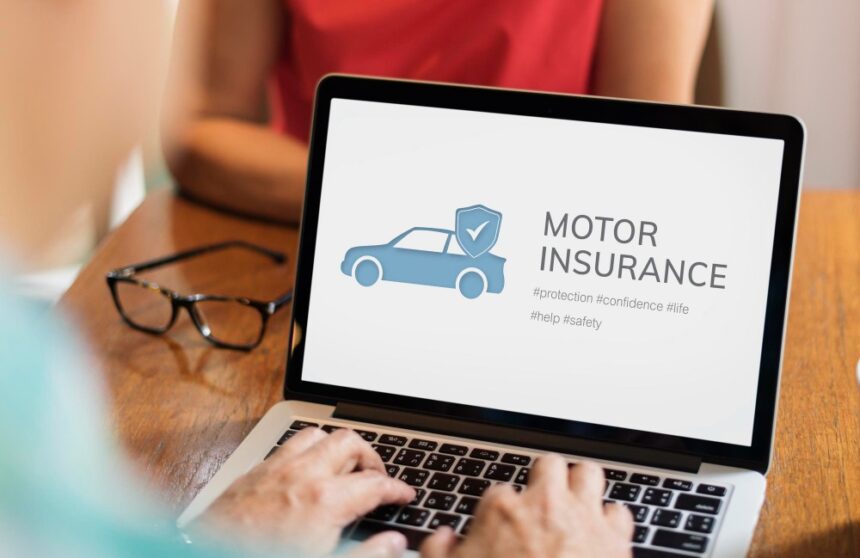Owning a vehicle brings freedom, convenience, and independence, but it also comes with responsibilities, especially when it comes to protecting your asset. One of the most crucial steps you can take as a car owner is securing the right auto insurance coverage.
Whether you are a first-time buyer or looking to refresh your understanding, this guide will break down everything you need to know about auto insurance, helping you to make informed decisions to protect both your vehicle and peace of mind.
Why Auto Insurance is Essential
Auto insurance isn’t just a legal requirement in most countries—it is a safeguard for your financial and personal security. Here’s why it’s so crucial:
- Financial Protection: Accidents happen. When they do, the cost of repairs, medical bills, or legal fees can skyrocket. Auto insurance helps cover these expenses, so you don’t have to pay out of pocket.
- Legal Requirement: In most places, driving without insurance is illegal. If caught, you could face heavy fines, license suspension, or even jail time.
- Peace of Mind: Knowing you’re covered in the event of an accident or theft can significantly reduce the stress associated with driving.
- Liability Coverage: Auto insurance not only protects you but also provides coverage if you’re responsible for causing injury or damage to someone else’s property.
Types of Auto Insurance Coverage
Understanding the different types of auto insurance is crucial when selecting a policy. Here’s a breakdown of the most common coverage types:
- Advertisement -
- Liability Insurance: This is the most basic form of auto insurance and is mandatory in most places. It covers the costs if you’re at fault in an accident and cause injury to others or damage their property.
- Collision Coverage: This pays for damage to your vehicle if you’re in an accident, regardless of who is at fault. Whether it’s a fender bender or a more serious crash, collision coverage ensures you can repair or replace your vehicle.
- Comprehensive Coverage: This covers damage to your car from non-collision events, such as theft, vandalism, natural disasters, or hitting an animal. Comprehensive coverage is essential for those who want full protection for their vehicle.
- Personal Injury Protection (PIP): PIP covers medical expenses for you and your passengers, regardless of who is at fault in an accident. In some regions, it may also cover lost wages and rehabilitation costs.
- Uninsured/Underinsured Motorist Coverage: If you’re in an accident with a driver who doesn’t have insurance or whose insurance isn’t sufficient to cover the damages, this coverage steps in to protect you.
- Gap Insurance: If you finance or lease a car, gap insurance covers the difference between what you owe on the vehicle and its current market value in case it’s totaled in an accident.
How to Choose the Right Auto Insurance
Selecting the right auto insurance policy is not a one-size-fits-all approach. Your decision should be based on several factors, including your vehicle, budget, and driving habits. Here are some steps to guide you:
- Assess Your Needs: Start by evaluating how much coverage you need. If your car is new or expensive, you might want comprehensive and collision coverage. If it’s older, liability coverage may be sufficient.
- Understand Your Budget: Determine how much you can afford to pay for premiums. Keep in mind that higher coverage often comes with higher costs, but it also provides more protection.
- Compare Quotes: Shop around and compare insurance quotes from different companies. Many insurers offer online tools to help you get instant quotes. Look at not only the price but also the coverage provided.
- Check the Insurer’s Reputation: Research the insurance company’s customer service, claims process, and financial stability. Reviews and ratings from current customers can provide insights into their reliability.
- Look for Discounts: Many insurers offer discounts for various reasons, such as being a safe driver, bundling policies, or installing safety features in your vehicle. Always ask about available discounts to reduce your premiums.
Factors that Affect Auto Insurance Rates
Auto insurance premiums are determined by several factors. Understanding these can help you know what to expect when shopping for coverage:
- Driving Record: Safe drivers with clean records typically pay less for insurance. If you have accidents or traffic violations, expect higher premiums.
- Age and Gender: Young drivers, especially males, usually face higher premiums due to their higher likelihood of accidents. As drivers gain experience, their rates often decrease.
- Location: Where you live plays a significant role in your insurance rates. If you live in an area with high crime rates or heavy traffic, your premiums will likely be higher.
- Vehicle Type: The make, model, and age of your car impact your insurance costs. Expensive or high-performance cars generally have higher premiums due to the higher cost of repairs or replacement.
- Credit Score: In some regions, your credit score may affect your insurance rates. A higher score indicates financial responsibility, which can lead to lower premiums.
- Usage: How often and how far you drive also affects your rates. If you use your car for commuting long distances, your risk of an accident increases, resulting in higher premiums.
The Importance of Comparing Auto Insurance Providers

Not all auto insurance providers are the same. It’s essential to compare multiple insurers to find the best combination of price and coverage. When comparing, consider:
- Customer Service: Look for an insurance company with a reputation for excellent customer service. Quick and easy claims processing is a must.
- Claims Process: Investigate how simple it is to file a claim and how long it typically takes for claims to be paid. Some companies are known for swift payouts, while others can be slower.
- Financial Stability: Check the financial health of the insurance company. You want to ensure they have the funds to pay out your claims when needed.
- Coverage Options: Some insurers offer unique coverage options or packages tailored to specific drivers. For example, some policies may include roadside assistance, rental car coverage, or even new car replacement coverage.
- Discounts and Rewards Programs: Many insurance companies offer rewards or discounts for good driving behavior, loyalty, or bundling auto insurance with home insurance. Make sure to take advantage of any savings opportunities.
Filing an Auto Insurance Claim
Accidents are stressful, but knowing how to file a claim can make the process smoother. Here’s a step-by-step guide to filing a claim:
- Assess the Situation: After an accident, ensure that everyone is safe. If necessary, contact emergency services.
- Exchange Information: Gather the contact and insurance information of the other driver(s) involved in the accident.
- Document the Scene: Take photos of the damage, the location of the vehicles, and any injuries. This documentation can be crucial when filing your claim.
- Contact Your Insurance Provider: Notify your insurance company as soon as possible after the accident. They will guide you through the claims process.
- Provide Necessary Documentation: Your insurer will likely ask for a copy of the police report, photos, and any medical bills. The more documentation you have, the smoother the process will be.
- Follow Up: Stay in contact with your insurance adjuster and make sure you understand what steps are being taken to resolve your claim.
Tips for Lowering Your Auto Insurance Premiums
Auto insurance can be expensive, but there are ways to reduce your premiums without sacrificing coverage. Here are some tips:
- Increase Your Deductible: The deductible is the amount you pay out of pocket before your insurance kicks in. By choosing a higher deductible, you can lower your premiums. However, make sure you can afford the deductible in case of an accident.
- Maintain a Good Driving Record: Safe driving is one of the best ways to keep your premiums low. Avoid speeding tickets, accidents, and other infractions.
- Bundle Your Policies: Many insurance companies offer discounts if you bundle your auto insurance with other policies, such as homeowners or renters insurance.
- Take Advantage of Discounts: Ask your insurer about discounts for being a safe driver, having multiple vehicles on the policy, or even for being a student with good grades.
- Limit Your Mileage: Some insurance companies offer discounts for low-mileage drivers. If you drive less than the average, ask about this option.
- Improve Your Credit Score: If your credit score is a factor in determining your insurance rate, work on improving it. A higher score can lead to lower premiums.
- Shop Around: Don’t settle for the first insurance policy you find. Regularly compare quotes from different companies to ensure you’re getting the best deal.
Auto Insurance
Auto insurance is more than just a requirement—it’s a crucial tool for protecting your vehicle, finances, and peace of mind. Understanding the types of coverage, factors affecting rates, and how to file claims can help you make informed decisions and ensure you’re adequately protected. By comparing providers and taking advantage of available discounts, you can secure a policy that fits both your needs and budget.

